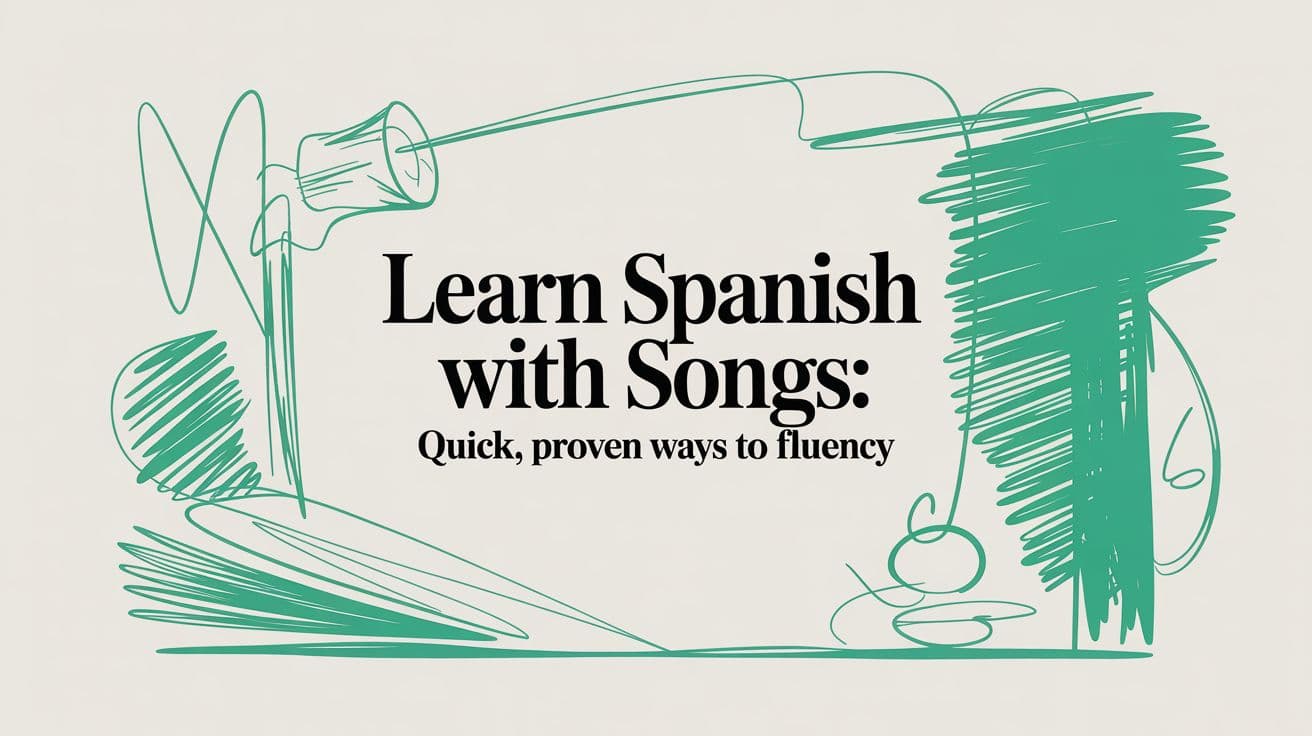
How to Learn Grammar Without Studying Boring Rules
📱 Quick Version Available!
Watch the short video for key highlights, but don't miss the in-depth insights in the article.
Learning grammar is often seen as one of the most challenging and tedious parts of acquiring a new language. Traditional methods rely heavily on memorizing rules, conjugation charts, and countless exceptions. However, grammar doesn't have to be boring or overwhelming. You can master it naturally by focusing on input, context, and practice rather than rigid study techniques.
In this blog, we'll explore four key strategies that will help you internalize grammar without the frustration of conventional methods:
- Listening to complete sentences to recognize patterns intuitively
- Using sentence-based flashcards for exposure to correct grammar structures
- Speaking without fear of mistakes to develop fluency
- Combining reading and listening to reinforce sentence patterns naturally
By following these steps, you'll discover that grammar can become second nature without the need for tedious memorization.
Instead of dissecting grammar rules, immerse yourself in the language by listening to full sentences. Your brain is wired to recognize patterns, just like when you learned your first language as a child. Pay attention to how words function within different contexts. Over time, you'll instinctively understand correct grammar without needing explicit explanations.
A great way to do this is by listening to native speakers in podcasts, YouTube videos, or everyday conversations. Try focusing on how sentences are structured rather than individual words. If you consistently expose yourself to correct grammar, your brain will absorb it naturally.

Forget the old flashcards with single words. Try flashcards with sentences so that grammar comes more naturally to you. Apps like Anki or Lenguia make your job easier by helping you absorb structures with spaced repetition. You can also create your own flashcards from sentences you encounter in your daily life or content you are consuming. This technique, called Sentence Mining, allows you to learn grammar by watching real sentences over and over again.
When using sentence flashcards, choose ones that have useful grammatical structures. Instead of memorizing abstract rules, you'll be reinforcing correct usage organically. Over time, these patterns will become part of the way you speak and write without you even realizing it.
Many learners hesitate to speak because they're afraid of making mistakes. But making mistakes is essential to improvement! Over time, your sentences will self-correct as you continue getting input from native content.
A key strategy is to focus on communication rather than perfection. Many learners waste time trying to form perfect sentences in their heads before speaking, which slows down fluency. Instead let your brain adjust naturally over time and don't worry about making mistakes in the beginning.

Reinforce grammar patterns by reading while listening. Watching subtitled content or listening to audiobooks while following along with the text deepens your understanding of sentence structure. This dual-input method strengthens the connections in your brain, allowing you to absorb grammar without conscious effort.
For best results, start with content that is slightly above your level but still understandable. Gradually, your brain will internalize correct grammar structures via induction without needing explicit study.
| Input Method | Benefits | Examples |
|---|---|---|
| Audiobooks | Hear pronunciation while seeing text | Graded readers with audio |
| Subtitled videos | Visual and audio reinforcement | YouTube videos, Netflix with subtitles |
| Podcast transcripts | Natural speech patterns | Language learning podcasts |
You don't have to dive into explicit grammar rules right away. Instead, focus on input, exposure, and real communication. When you finally decide to explore grammar rules, they'll feel intuitive rather than confusing.
This approach aligns perfectly with the Comprehensible Input method used by Lenguia, which emphasizes learning through understanding messages rather than memorizing rules. As Kató Lomb said:
We learn grammar from language, not language from grammar.
By applying these techniques consistently, you'll improve your grammar effortlessly—just like how children acquire their native language. This natural approach to grammar acquisition is not only more effective but also far less stressful and more enjoyable.
The big advantage is that when you start speaking, you won't need to construct sentences in your mind. You'll just speak, as grammar becomes natural to you and not something memorized.
Traditional grammar learning often feels disconnected from real language use. You might memorize all the conjugations of a verb, only to freeze up when trying to use it in conversation. This happens because:
- Isolated rules don't stick - Grammar rules learned in isolation often don't transfer to real communication
- Conscious processing slows you down - Trying to remember rules while speaking creates hesitation
- It ignores how we naturally learn - Children acquire grammar without studying a single rule
By contrast, the natural approach:
- Builds an intuitive "feel" for what sounds right
- Develops automatic, fluent responses
- Creates stronger neural connections through meaningful context
- Makes the learning process enjoyable rather than tedious
Ready to try this approach? Here are some simple ways to begin:
- Find content you enjoy in your target language - podcasts, YouTube channels, or simple books
- Create sentence flashcards from this content, focusing on structures that are new to you
- Listen to the same content repeatedly until it feels completely natural
- Read aloud to practice producing the language without pressure
Remember that consistency is key. Even 15-30 minutes daily of this type of practice will yield results.
For a stress-free way to learn languages naturally with all these principles built in, try lenguia.com. Our platform provides the perfect balance of comprehensible input, sentence-based learning, and natural grammar acquisition to help you become fluent without the frustration of traditional methods.


